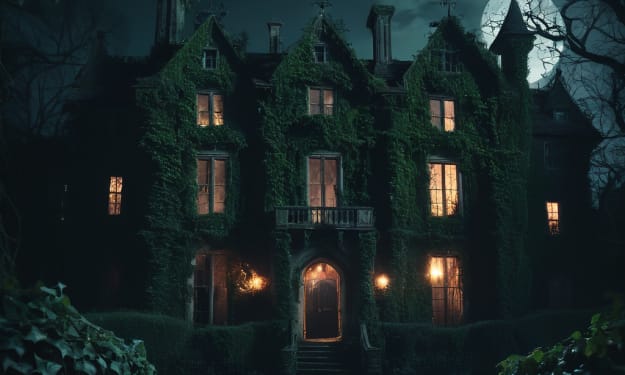The burning of witches and the history of Holocausts forgotten
How have we hidden our greatest murders? Through a good story that paints the murdered in a troubling light and insists that the incident in question is isolated when it’s anything but.

There’s this meme that has made its rounds on social media regarding witches and the people that burned them. The comments are obviously filled with people pointing out that no witches were actually burnt here in the U.S. (but they were in Europe by the tens of thousands) and then the rest of the discussion is usually filled with lots of people agreeing and stating again and again that “no witches were burned”. But again, they were in Europe by the thousands.
The meme goes something like this:
“Who knows why we were taught to fear witches and not the ones who burned them?”
It’s an interesting question because even today there’s a bevy of witch-related pop culture and iconography, including recent films on Disney+, that continue the narrative that witches were violent, dangerous beings, of whom we should be afraid. I’m not suggesting that we can’t enjoy these movies, books, TV shows, etc. I for one enjoy many media that employs witch narratives. The Witch is a brilliant horror film. Hocus Pocus is enjoyable and a staple for many of the fall season, I know I am usually up for watching it on occasion when I need a little autumnal nostalgia. What I find peculiar is that the narrative persists, whether it be in film, television, books, etc. We’re still afraid of people who ultimately were murdered in droves for simply being outsiders within a community.
So, what of the quote? I’ve looked and looked for a source for who might've originally said this or a version of it, but I can’t find any source that states where this was originally written, or who might’ve said it. But in that search, I came across an interesting series of articles that reminded me of something I read in a book about Genghis Khan several years ago, a story about antisemitism in central Europe during the middle ages.
The prevailing narrative surrounding witches, at least here in the United States, is that the witch trials happened over a short period of time in Massachusetts as a result of a highly restrictive and authoritative, often patriarchal, theocracy. Though I’ve never myself been to Massachusettes, I know that to say the name of the town (which is actually the name for several U.S. cities) Salem is to immediately conjure up images of witches, authoritarian Protestants, burnings, and thanks to Arthur Miller, McCarthyism.
The reality is this: Salem is a variant of the Hebrew word Shalom or extended, Jerusalem, a significant city in all of the Abrahamic religions (that is Islam, Christianity, Judaism), and it means peace. Yeah, Salem or Shalom means “peace or wholeness”.
The history of the witch trials is long and multi-faceted and to explain it in full here would require a great deal more words than most of you are probably willing to read in the middle of this article. So, I’ll try to condense it here.
The trials started in February of 1692 and ended a little over a year later in May of 1693. Two cousins — both of whom were under the age of 12 — Abigail Williams and Betty Parris were considered by a physician to be “under an evil hand”. This supposed affliction spread and in the end because Puritans genuinely believed this to be the work of the devil, three women were ultimately arrested. They were a pregnant mother named Sarah Goode who also had a young daughter, Sarah Osborne who was in the middle of suing one of her accusers and had long been absent from church, and Tituba an enslaved woman in Betty Parris’ home. Ultimately, an enslaved woman who had very few rights, to begin with, Tituba confessed to practicing witchcraft and said that Osborne and Goode had forced her to. Though she later recanted her confession, saying that she only confessed because her master Samuel Parris beat her. She was ultimately released. Osborne died in prison, while Goode’s husband and child, after being coerced, corroborated with Sarah’s being a witch. Goode would give birth to her baby in prison. Her baby died and she would be hanged shortly thereafter. In total, 200 people were accused and of those, 20 were executed, 14 of them women, 6 of them men. Popular narratives of the witch trials isolate the incident to Salem, but it went well outside the city’s borders. Andover, Massachusettes, a town northwest of Salem actually accused and arrested more people than Salem. The trials were ultimately ended when the Massachusetts Colony’s governor’s wife was accused and he suspended it.
We often, retrospectively, view the Salem Witch Trials as a short, isolated incident, just one small chapter in the fabric of America’s troubled past. But in reality, witch trials and other forms of genocide whether it be against members from outside the community or within, are all too common. Yes, here in the Americas, but also across the world. As mentioned prior, no witches were actually burned in the Americas, but they were in Europe. According to accounts, nearly 80,000 suspected witches were put to death in Europe, 80 percent of them being women from 1500 to 1660, and it was spurred on by the writing of a book entitled: Malleus Maleficarum, or the “Hammer of Witches” written by German clergyman Jacob Sprenger in 1486.
At the 1992 Salem Witch Trials Memorial Dedication, author of Night and Holocaust survivor Elie Wiesel spoke about being asked why he, of all people, being a non-expert on such things would be asked to speak. He said:
“When I was invited to come here and speak to you about the Salem trials, about the witches of Salem, I was wondering why me? It’s not my field. My field is the Bible, philosophy, literature, not history. Surely not this aspect of history but I was a good student and I accepted. I became grateful, too. I began studying the subject and for the last three or four weeks I did nothing else. I read everything about the event. And then I realized that there are so many things I didn’t know. Do I know now? That is the question.
“In fact, 300 years ago certain things happened here and we still wonder, how are we to comprehend the violent passions and tragic events that shook up this community? A community that you, Mr. Mayor, termed, rightly, a community devoted to “shalom,” “salam,” Salem, peace.
“Were there witches in Salem? If the answer is yes the reactions to them may be understandable. Doesn’t scripture command us to leave no witch alive? Once you study the law you wonder why such biblical and blind harshness towards witches? Why not towards wizards? Why this sexism in the bible? Then you are wondering also what is it about a witch, what was it that inspired such entitleism [sic], such fear? Why were they afraid of the so-called witches? Is it because the witch invokes a power which is not the power we invoke when we want to believe in the divine? Is it because a witch is supposedly using certain links that she had, might have had, with the unholy forces, with the devil, with Satan?”
Wiesel went on to tell a story about a woman in Berlin who helped Jews during the Holocaust and why she did what she did despite the fact that she might have been taken, as well as her family, and placed with the Jews in a labor camp. Her response, “You want to know why I did it. I will tell you. Because of self-respect.”
It’s brilliant and poignant and it illustrates the connective tissue between holocausts — because that’s what these are, right, especially if we take holocaust at its etymological meaning: “sacrifice by fire” or “burnt offering” — and much like the Holocaust of the Third Reich, when we look at it through a retrospective lens we tend to see it as an island isolated in history. We say, “For these few years people lost their minds and committed an atrocity, but not before and not after,” but the history of humanity is a history of burnt offerings or holocausts committed by “the state” against the populace or against some outsider or some outsider within the populace.
Misogyny, like the kind that led to 80 percent of 80,000 humans being murdered in Europe wasn’t a short isolated incident. From the publishing of the Malleus Maleficarum to the end of the Salem Witch Trials was over 200 years. The Jews of central Europe weren’t simply hated from 1938–1945. Rabbi Löw, creator of the Golem of Prague — protector of the Jews of Prague against Rudolph II, emperor of the Holy Roman Emperor — a story of Jewish folklore existed to bring peach to the Jews of modern-day Czechia (then Bohemia, just southeast of Germany) was a story that has its roots in a time over 300 years before the Holocaust.
Wiesel knew as he delivered his message that connective tissue between his own people, his own family, and that of Sarah Goode. during his speech he brought up several other trees of the family tree of genocide, including the very early-90s reference (the dedication was in ’92), the Srebrenica genocide during the Bosnian War, wherein ethnic cleansing was carried out much like that of Nazi Germany, as the Serbian government killed Boniak Muslims numbering in the thousands.
“And today to our great dismay and sadness there is a kind of nationalistic witchcraft in what used to be Yugoslavia. When we remember these victims here with pride and sadness and admiration we cannot not remember the victims of today and yesterday…It came back into the news, and what are they, they Serbs, doing? Opening concentration camps, death camps, putting people into boxcars? Killing them? Summary executions. Why, because they are Muslims? Or Croatians?”
I could go on and on, naming genocide after genocide, explaining the connective tissue, but then this article would continue for far too long. From the Arawaks in Hispaniola, the Powhatan and Wampanoag, the Cherokee and Cree, the Armenians, the Uyghurs, and on. The point remains the same, whether it be for Lebensraum or Manifest Destiny, or any other narrative chosen by those committing the crimes as a way to explain the murder away, it is not a single instance in human history, it is an ongoing, never-ending narrative with no foreseeable beginning in written history.
We were told to fear witches not because they were there to ever be feared. We were told to fear them for the same reason John Wayne fought Native Americans — we were told as a way to cover up our crimes the way an abusive parent tells a child “why’d you make me do that?”
About the Creator
Richard Foltz
Hey, my name is Richard Foltz. I refuse to use my first name because it is the name of frat guys and surfers, so...
I've written for years and currently work as an editor for my university's newspaper.






Comments (1)
Great information and comparative analogy! Good article.